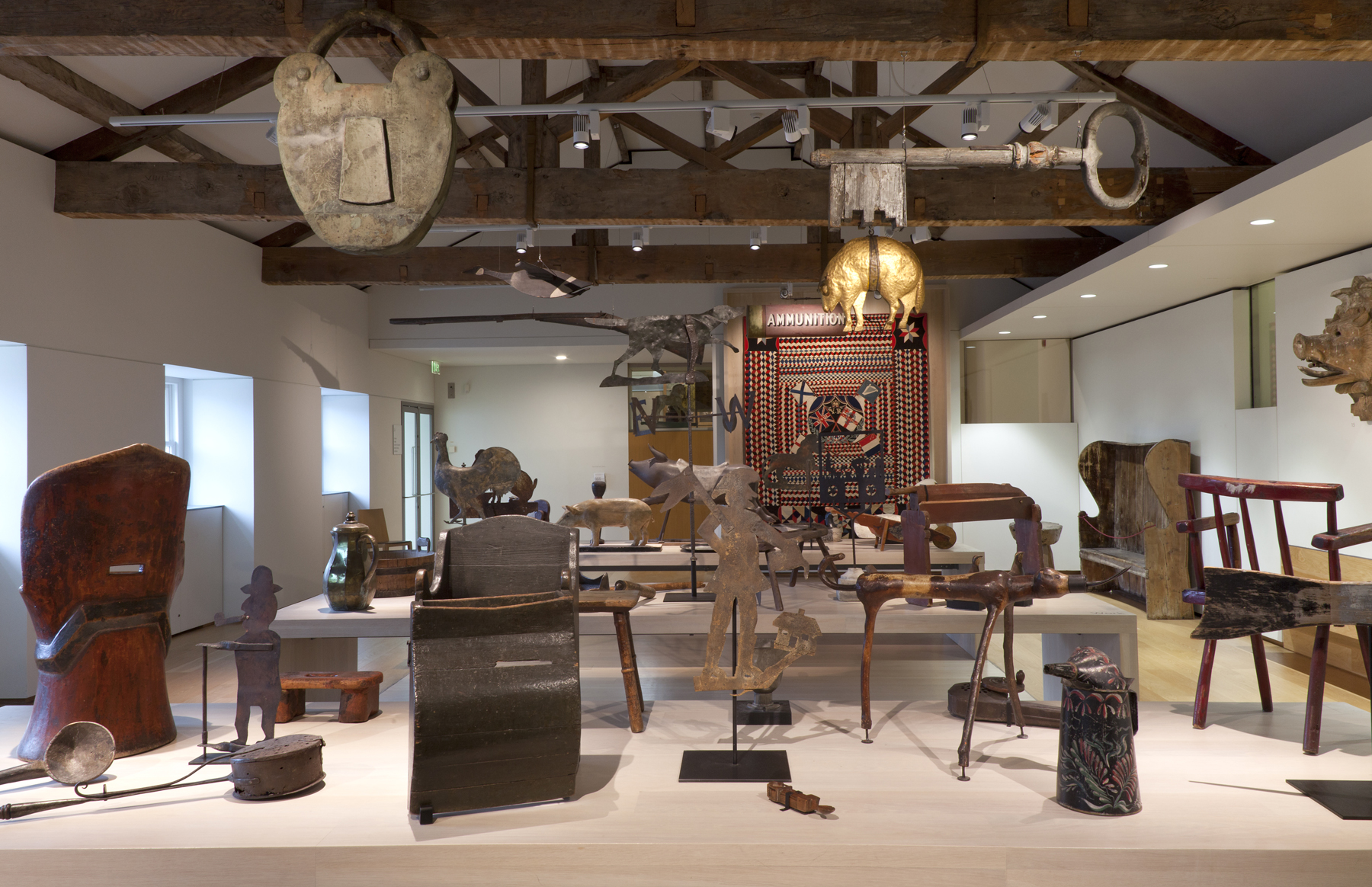The latest catalogue published by Robert Young Antiques, based in Battersea, south London, which specialises in folk art, opens a fascinating window on to idiosyncratic objects whose charm lies partly in their humble beginnings and raw, naturally patinated surfaces. It highlights the broad spectrum of artefacts this genre encompasses. Yet 40 years ago, it was little-known in the UK despite being long established in the US. Flick through the book and you see a corpulent ewe almost comically supported by spindly legs, a simply carved wooden tavern table and a bird-shaped snuff box. There are also antiques that appear more conventional, including an elegant, honey-toned chest of drawers in burr elm and Windsor chairs, those functional yet appealingly rustic seats which have inspired young designers in recent years, resulting in many a popular, contemporary version. These pieces mainly date from the 18th and 19th centuries.
On other pages are dressmaker’s mannequins, a wooden Noah’s ark boasting a menagerie of miniature, painted animals and naïve portraits of girls in crinolines standing in flatly rendered landscapes showing no mastery of perspective. The latter nevertheless look stylish in their simple black frames.
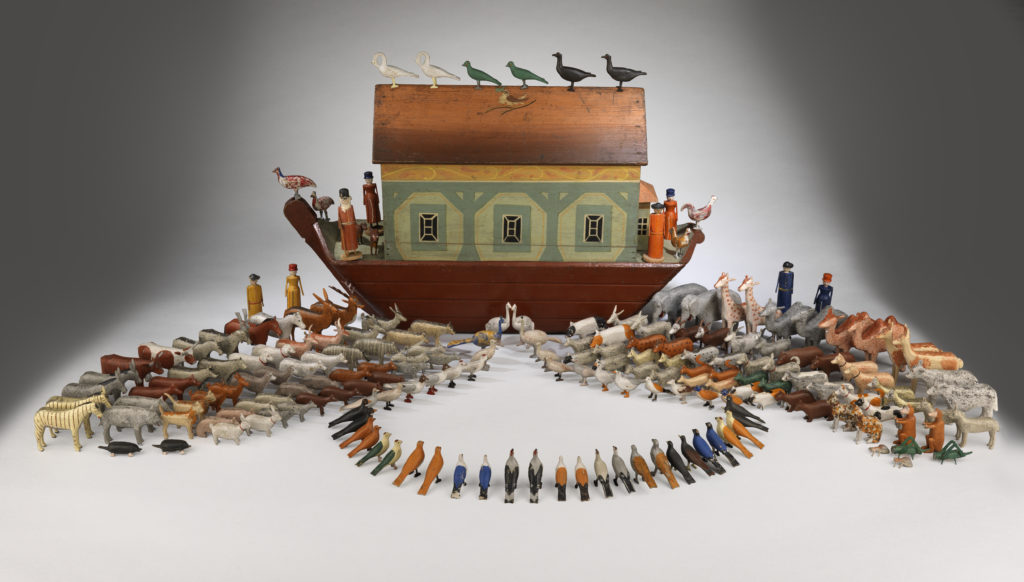
Usually made by artists and craftspeople untutored in fine art, who passed their skills down the generations, rough-and-ready folk-art pieces were once “scorned” by the antiques establishment, says Young, who opened his shop with his wife, Josyane, in 1978.
By the same token, folk art is unencumbered by snobbery. Paradoxically perhaps, it’s appreciated by people who are unimpressed by snobbery, by whether it’s the work of prestigious cabinetmakers or well-known artists. “Our clients are amazingly sophisticated – lawyers, barristers…” says Young, whose shop sells ‘British and European Primitive, Vernacular, Folk and Naive Art’. “It requires self-confidence to be drawn to it. Our customers can see beyond its simplicity. They like it for other reasons – its boldly sculptural forms, personality, unpretentiousness.” Robert and Josyane Young themselves are highly educated; he studied French art and civilisation at Sorbonne University in Paris, then trained at Sotheby’s, she attended the Fine Art and Decorative Art course at London’s Victoria and Albert Museum and studied English and law in France.
However, it took decades for folk art to acquire a UK following. “When we started out, we didn’t polish up our furniture,” recalls Young, whose interest in the area stems from his childhood love of simple, irregularly shaped pebbles and driftwood. “In the 1980s, we discovered a market for folk art in the US and mainly sold to Americans. Americans have pride for their Settler heritage, though a lot of it had European roots so Americans could understand it. America is a young country making it easy to trace an object’s provenance to, say, the original blacksmith in a certain village. The antiques world was critical of us at first – they thought we were undermining traditional antiques. We had a battle to get pieces through vetting committees at antiques fairs. But now it’s an accepted part of the marketplace.”

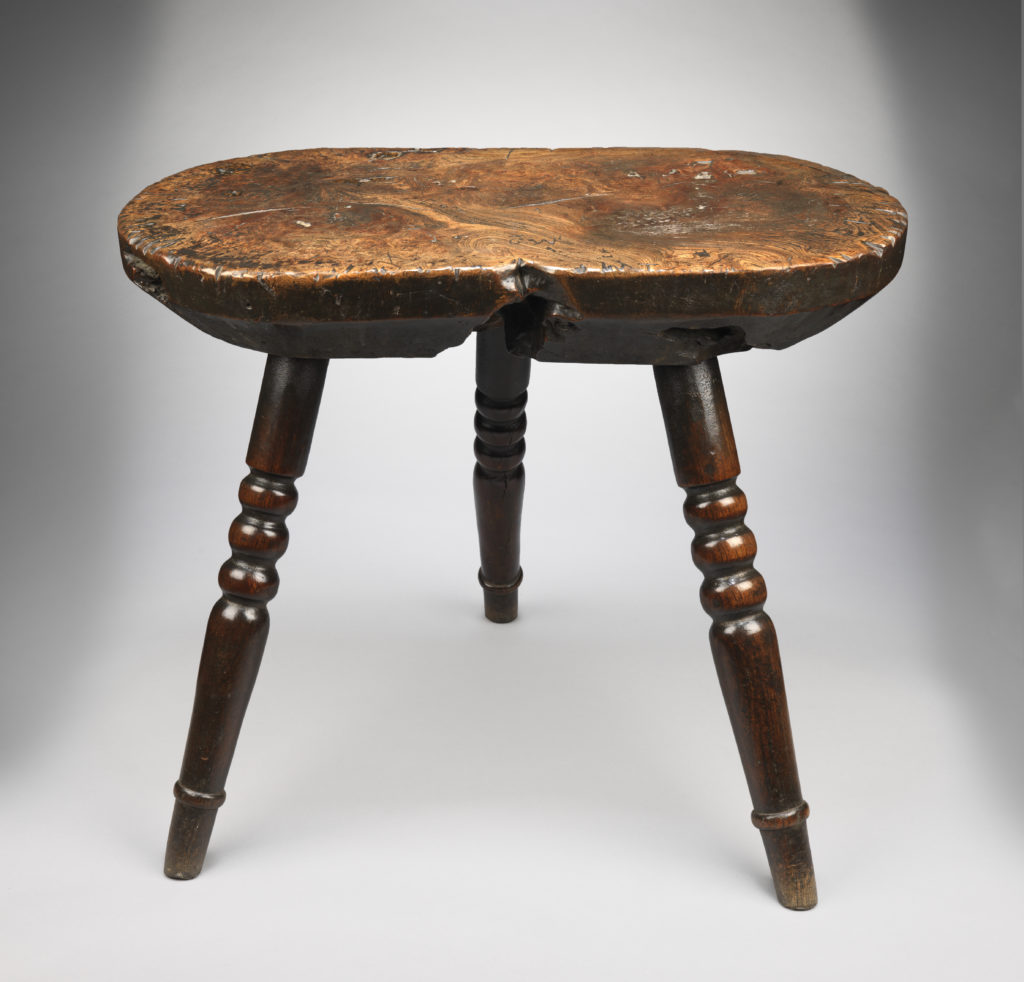
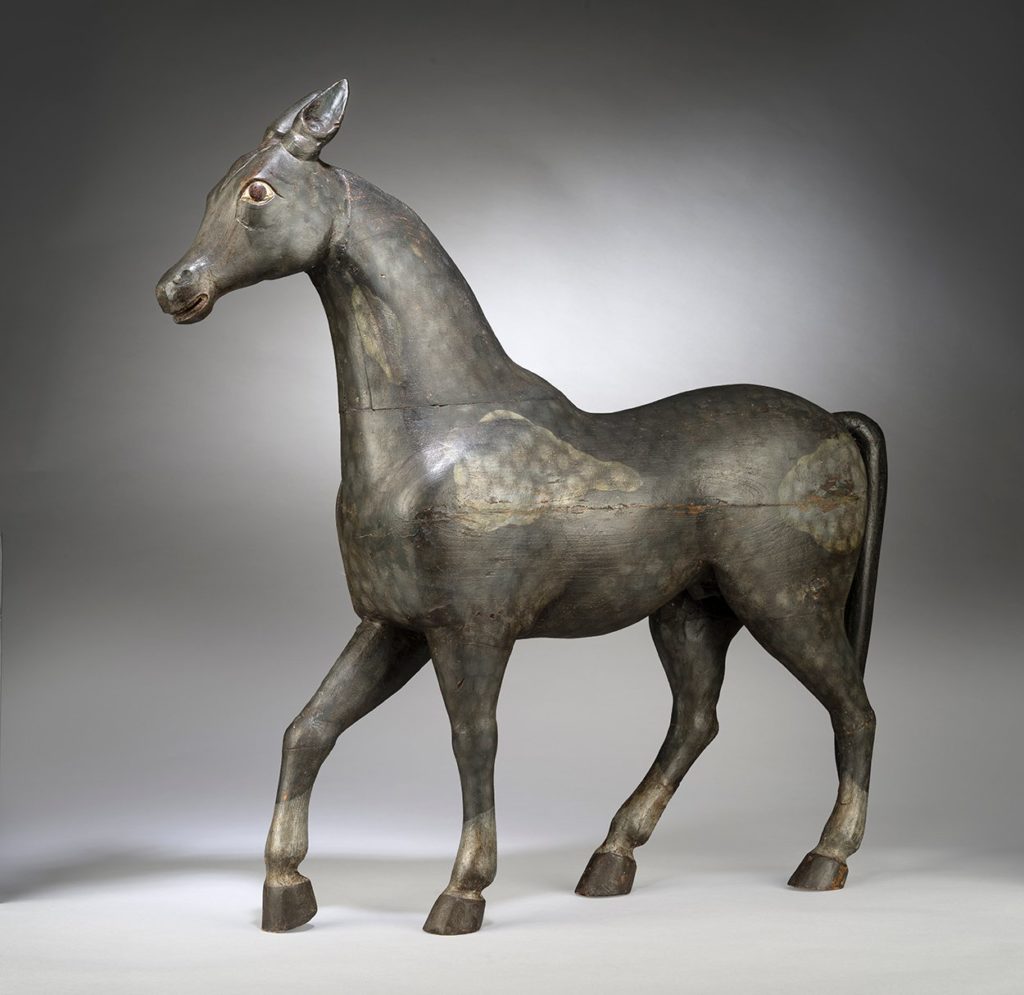
The Youngs have plenty of experience of incorporating folk art into domestic interiors. They also run the interior design consultancy, Rivière; its projects characteristically boast folk furniture such as trestle and cricket tables – a folk art category called ‘vernacular’.
“In 1986, The World of Interiors magazine featured our London flat. That immediately exposed our aesthetic to a different audience and gave us credibility in our world,” remembers Young. After the chintz-loving 1980s, a cleaner, more minimal style of interior came into vogue and folk art pieces were prized for their bold, sculptural qualities and ability to stand out in relatively uncluttered rooms.
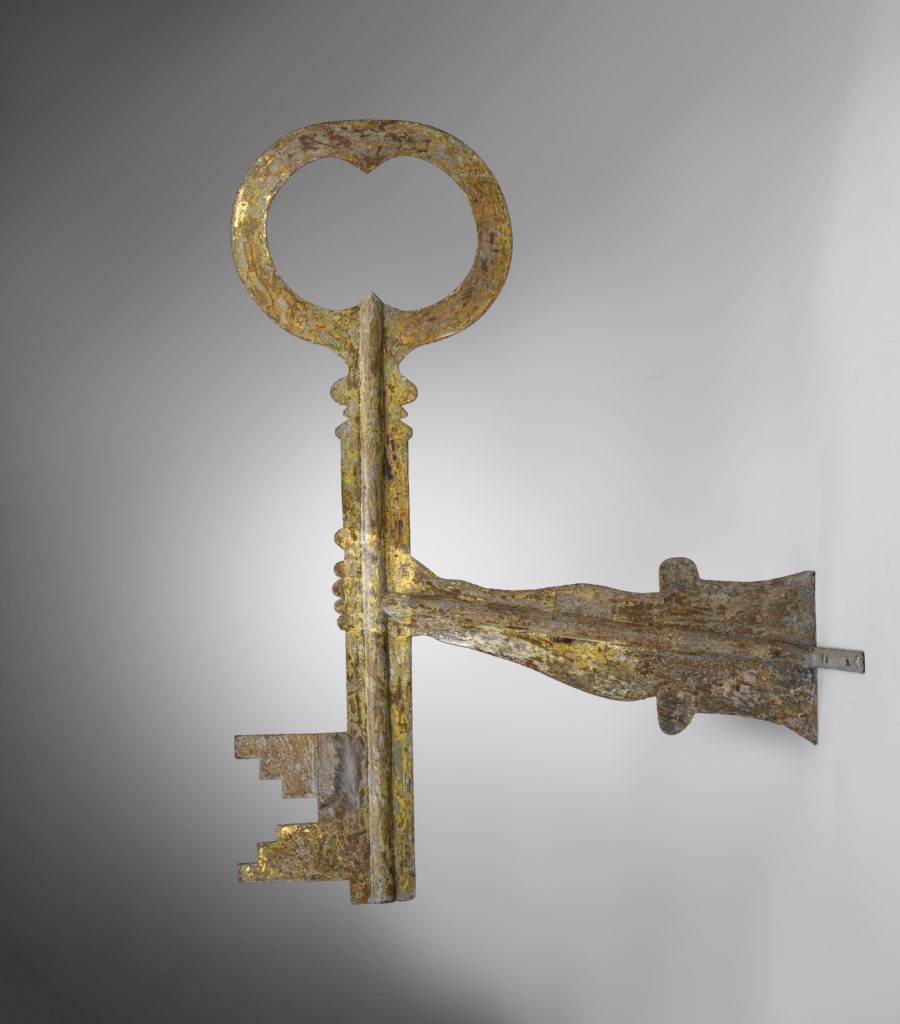
He enumerates key sought-after items, including pub signs and golden fleece signs which are often as rare as the buildings they were once attached to. Signs often took the shape of outsized items; a typical example was a gigantic key indicating a locksmith. (Folk art is often reminiscent of Alice in Wonderland’s surreal out-of-scale objects.)
Erring towards fine art are the genre’s ‘livestock paintings’. “Itinerant painters would paint a prize-winning cow and exaggerate its size,” says Young. “Their paintings often showed no understanding of perspective or anatomy. One growth area is love tokens, typically snuff boxes and Welsh love spoons, which provide socio-historic interest as they shed light on courtship rituals.”
It is ironic that folk art has been seen as inferior to more officially recognised art and design since many major 20th-century artists have been inspired by ancient artefacts – Pablo Picasso was influenced by traditional African masks, while Jean Dubuffet founded the movement Art Brut (raw art) to describe art created by people outside the established art system.
Today, others are raising awareness of folk art and putting it on the cultural map. Compton Verney Art Gallery & Park in Warwickshire, England, houses a folk art collection originally amassed by Hungarian-British art dealer Andras Kalman in the second half of the 20th century. It comprises mostly British pieces from the 18th, 19th and 20th centuries, including weathervanes, shop signs, agricultural implements and paintings by Cornish artist and fisherman Alfred Wallis.
Julie Finch, CEO and director of the gallery, defines folk art as “accessible objects, previously collected as curiosities”. “It’s often pre-industrial,” she adds. “From a Western art history perspective, folk art is seen as a lower order in the art hierarchy.” But, she says, this perception is changing, thanks in part to Turner Prize-winning artists Grayson Perry and Jeremy Deller who have democratised art by collaborating with others: “Their work and that of many other artists can be consumed on TV or through mobile devices. Art practices – be they pottery, textiles, portraiture or recycling materials into sculptures – are now more accessible since they’re televised.”
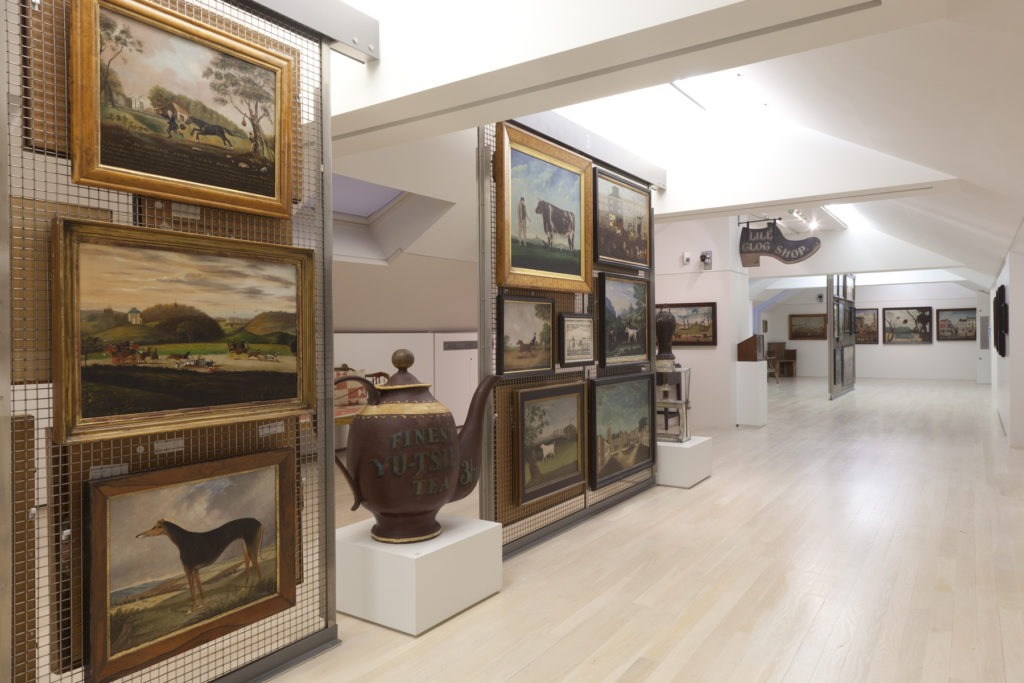
Finch sees folk art as becoming more popular with people increasingly rejecting mass-produced, homogeneous products. “Our homes have become places for self-expression and individualisation,” she believes. “We’re able to curate our lives through art and use of space. One of my favourite pieces is a wire and wood sculpture of a woman riding a horse, with hair sculpted and flowing as if in charge of a greater destiny. It’s displayed by a window on its own, as a statement piece.”
James Brett, a former filmmaker, founded The Museum of Everything in 2009, now a touring museum that exhibits art mostly by artists who, he explains, “function independently of art as we know it today”. He also founded The Gallery of Everything in London. He identifies two main strands of folk art: “There are folkloric traditions passed down the generations – a good example is Sicilian puppets. Then there is more individuated art with origins in the folk art tradition but the person making it is creating something more individual, bearing the stamp of the creator.”
The Museum of Everything shows art in spaces that are the antithesis of the white-cube gallery. “Our first gallery in a former recording studio in Primrose Hill was a bashed-up space and our aesthetic was born from there,” Brett says. “For our exhibition at the Museum of Old and New Art (Mona) in Hobart, Tasmania, which featured almost 2,000 objects, we designed the entire space, including its furniture and wallpaper.”
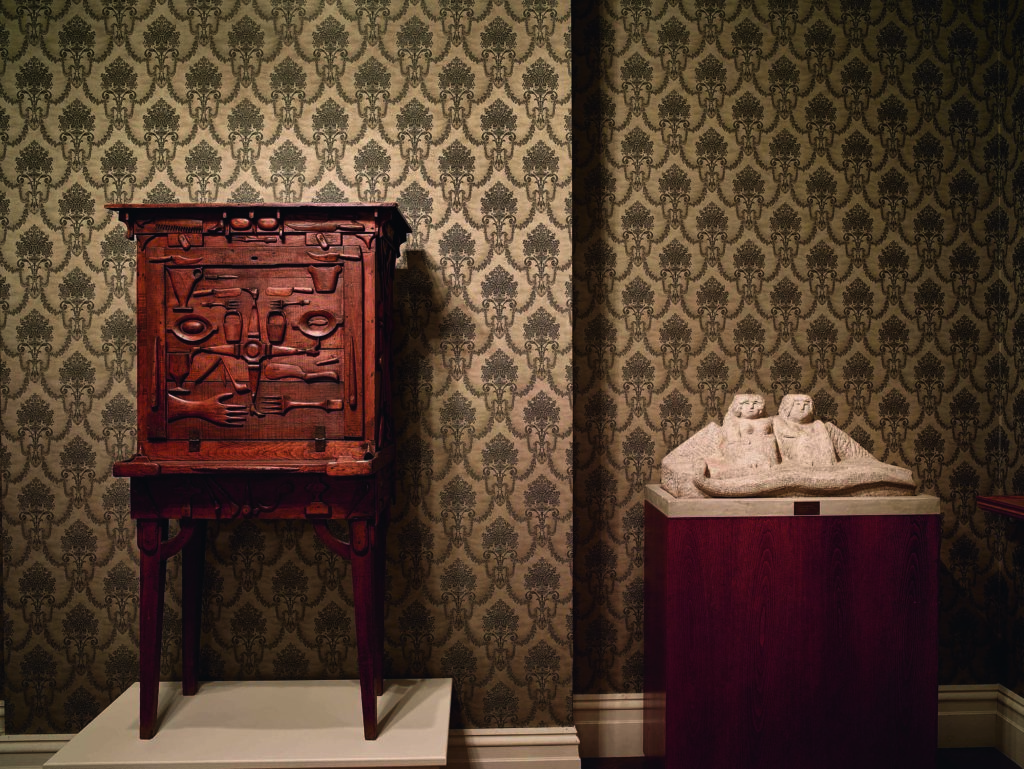
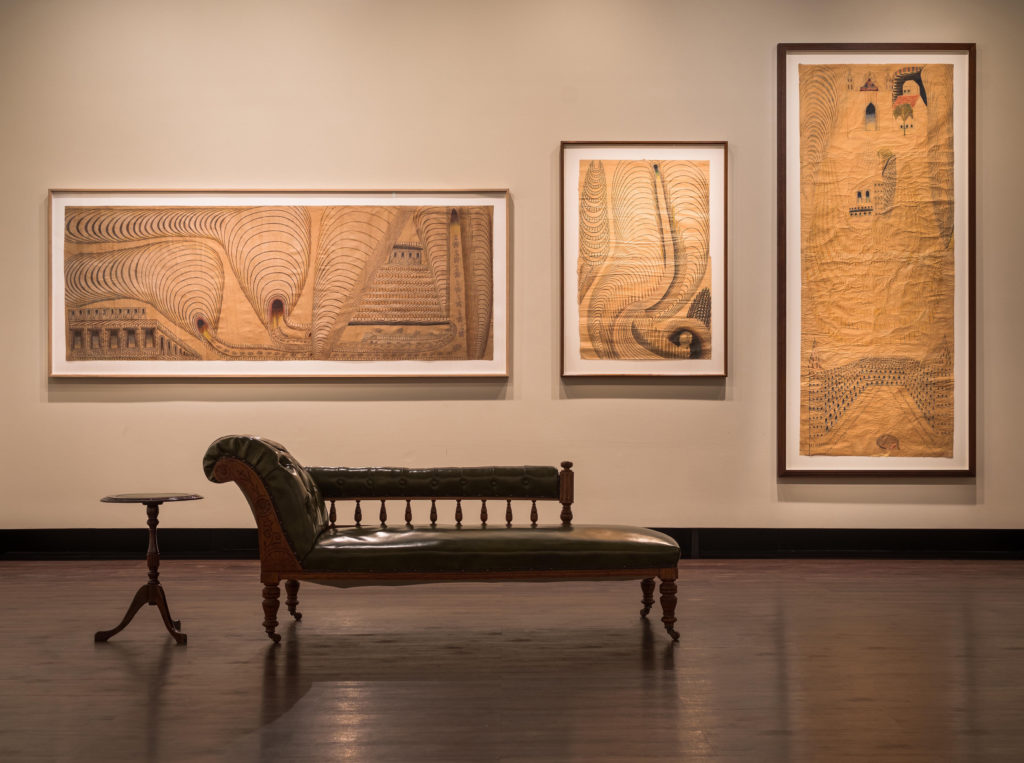
The appeal of folk art in homes is that they inject theatricality into interiors and “provide a talking point”, he says. He himself has a penchant for furniture with carved wooden animals. He’s also particularly fond of a Swiss shepherd’s crook: “It has a tongue that pops out if you pull a little lever.” Humour and wit are other characteristics of folk art.
But perhaps folk art’s main appeal is that it’s hugely varied, cutting as it does across so many cultures, traditions and periods. It’s no surprise then than it’s experiencing such growth in popularity, especially during a time when people around the world are holding onto stability and heritage. Folk art could just become this year’s decorative must-have.
Effect Magazine is brought to you by Effetto



